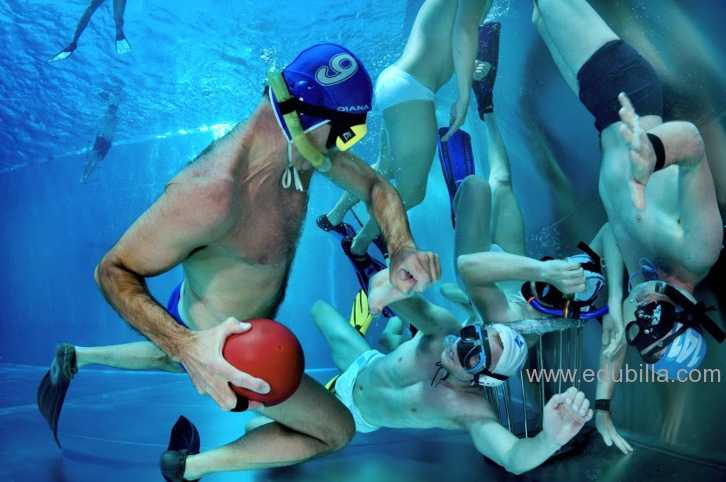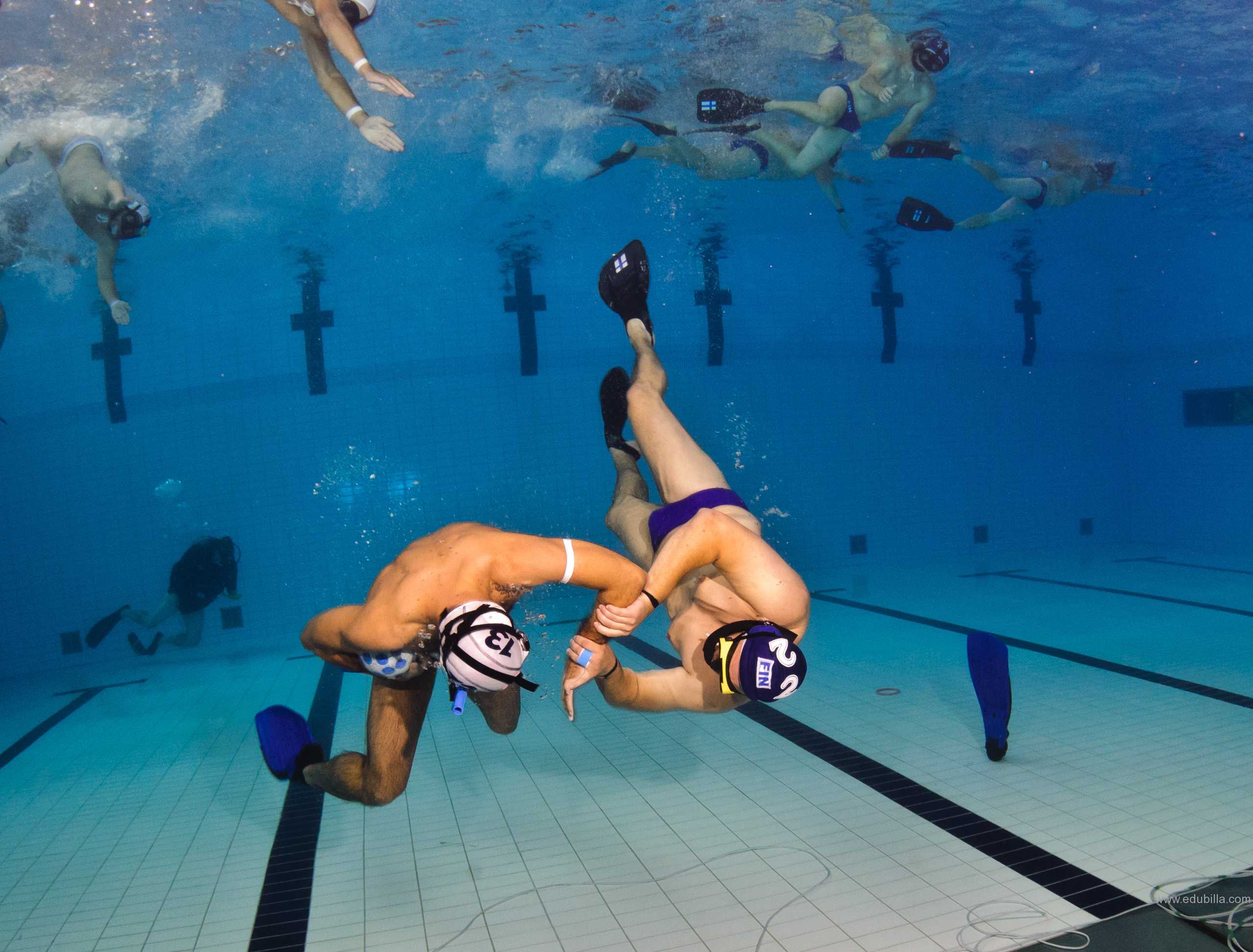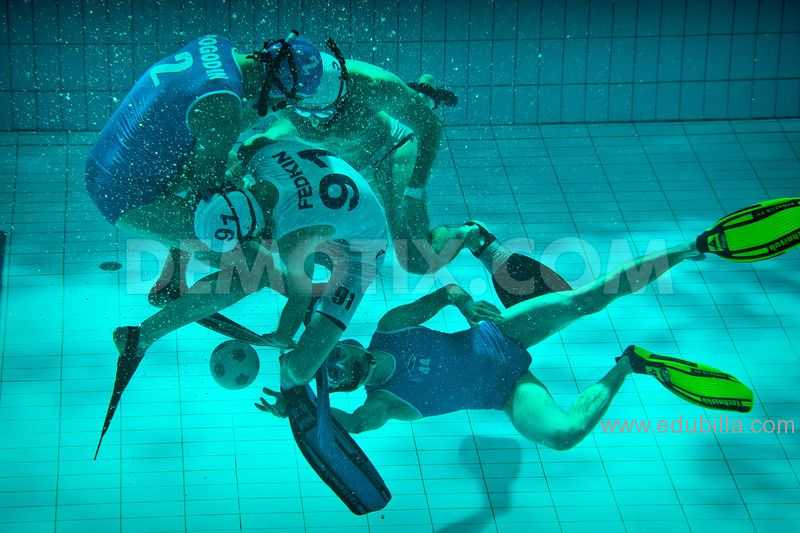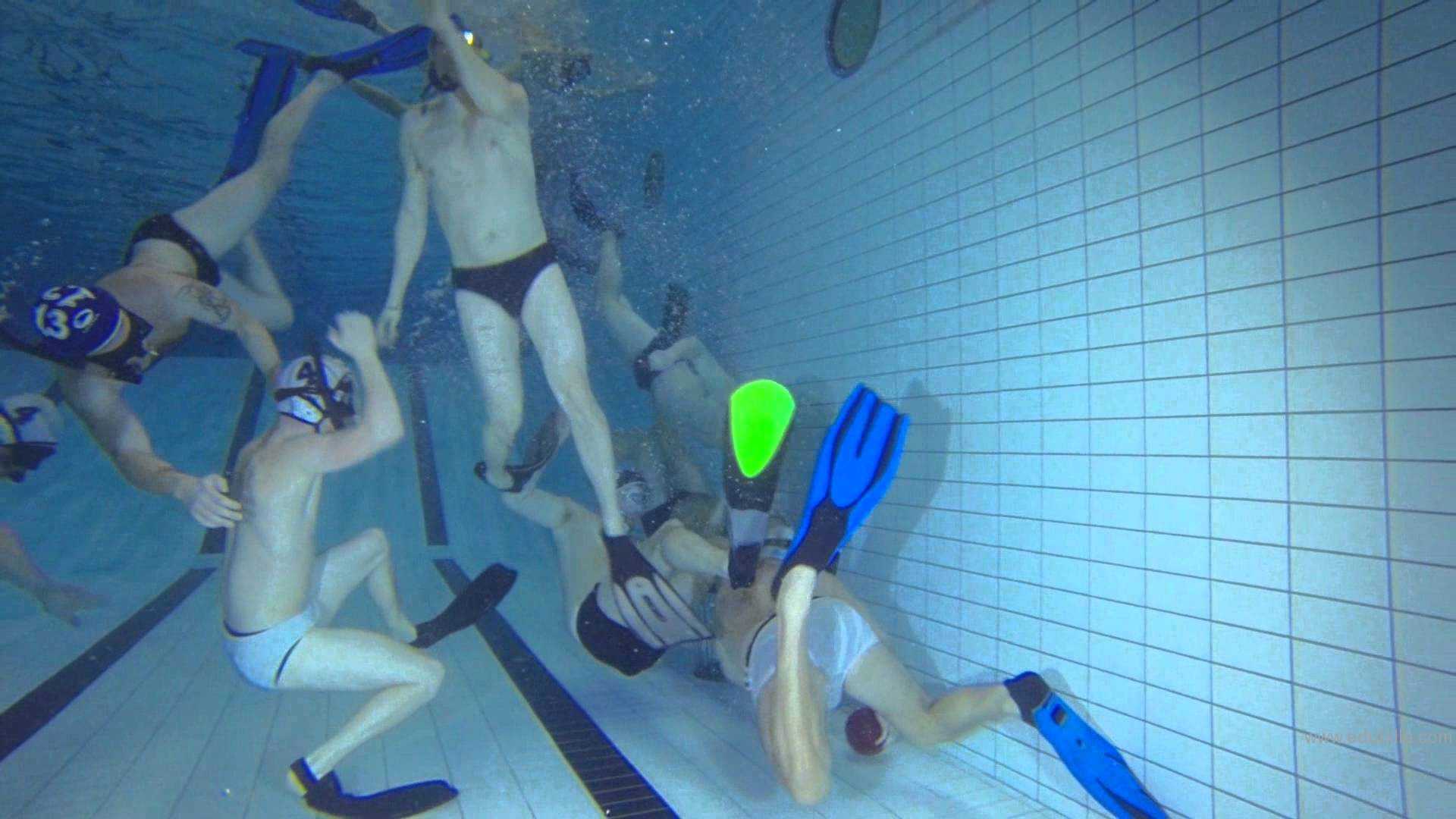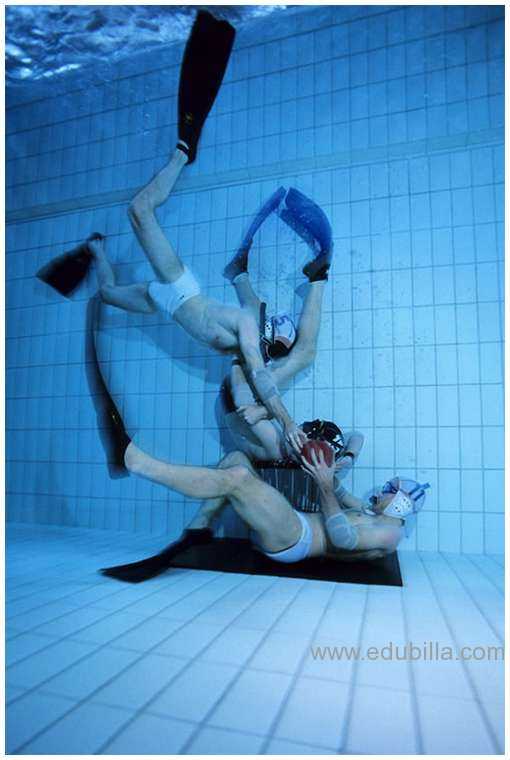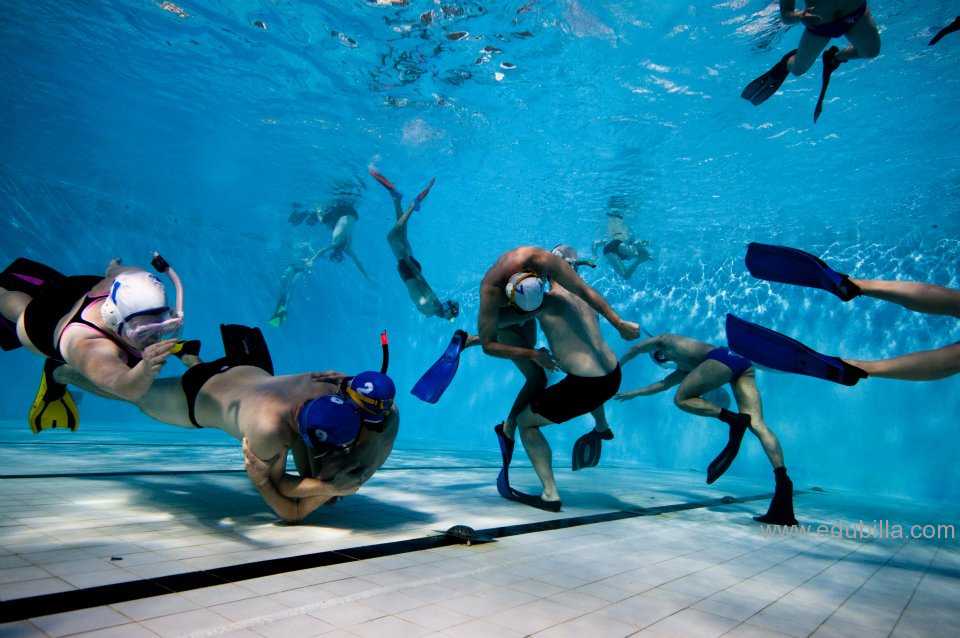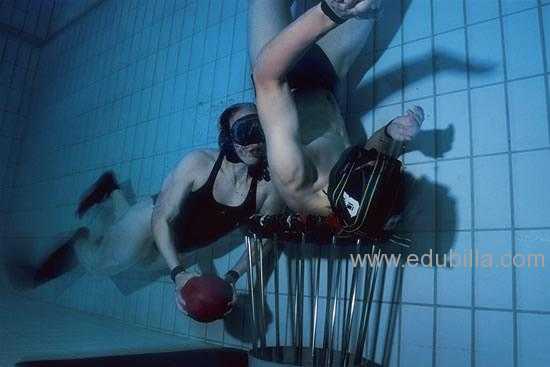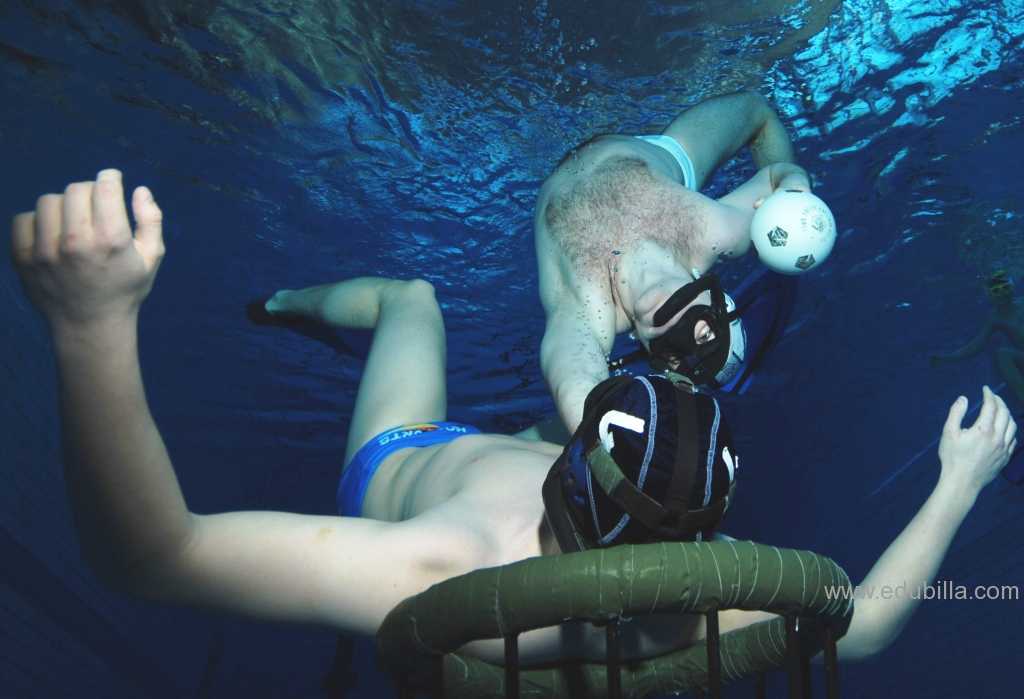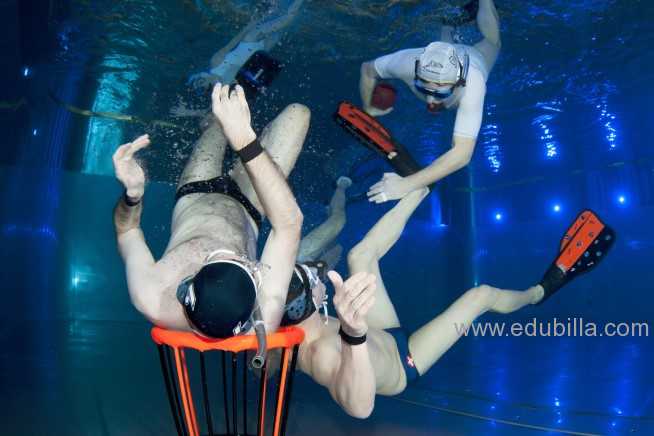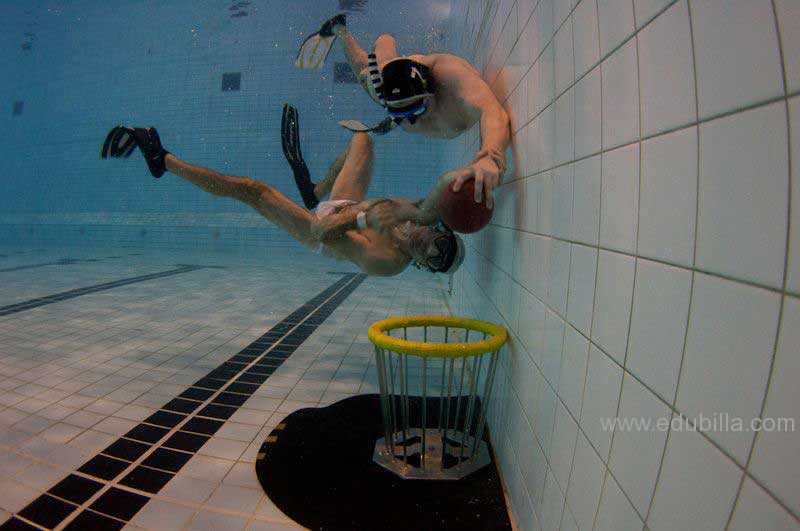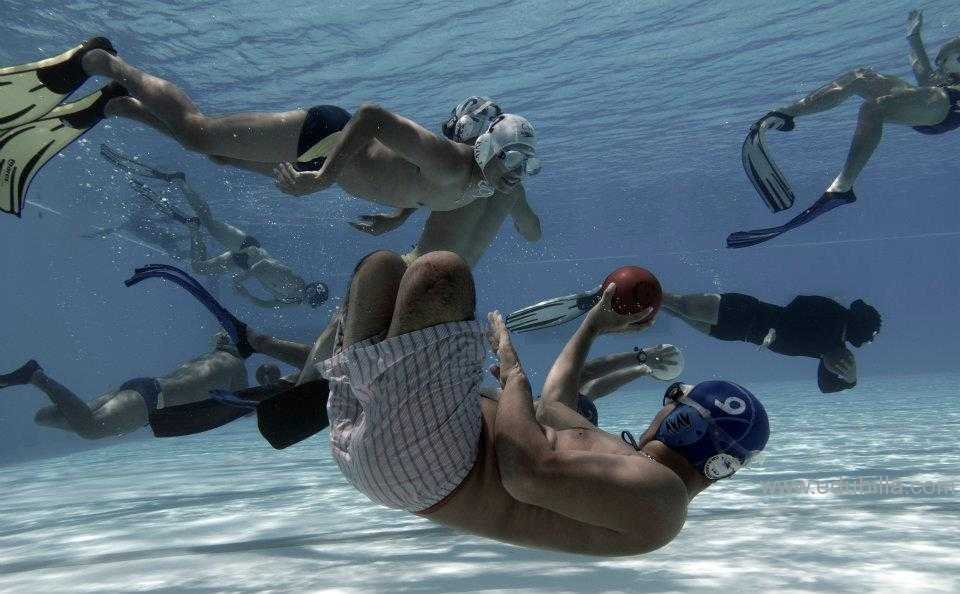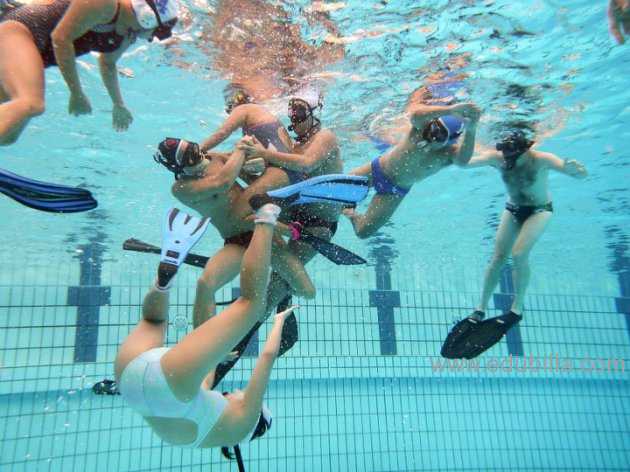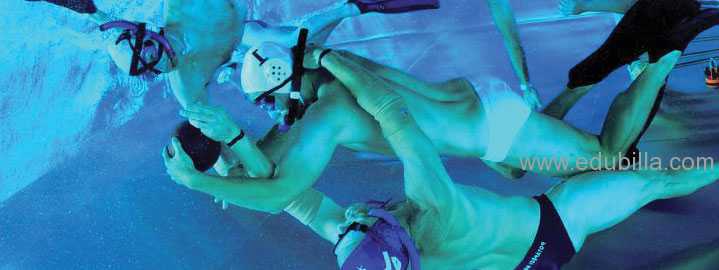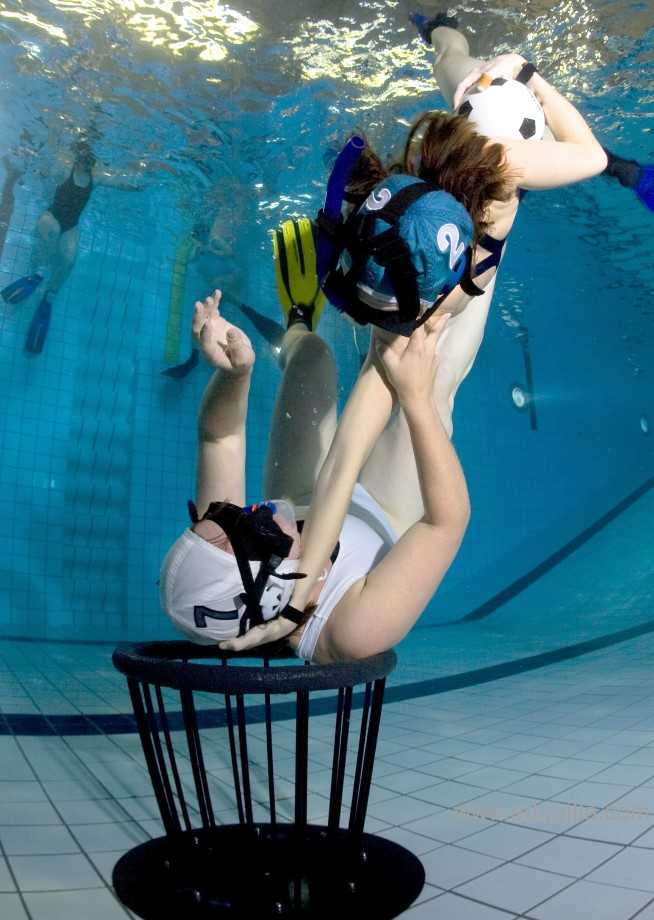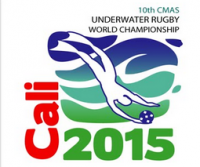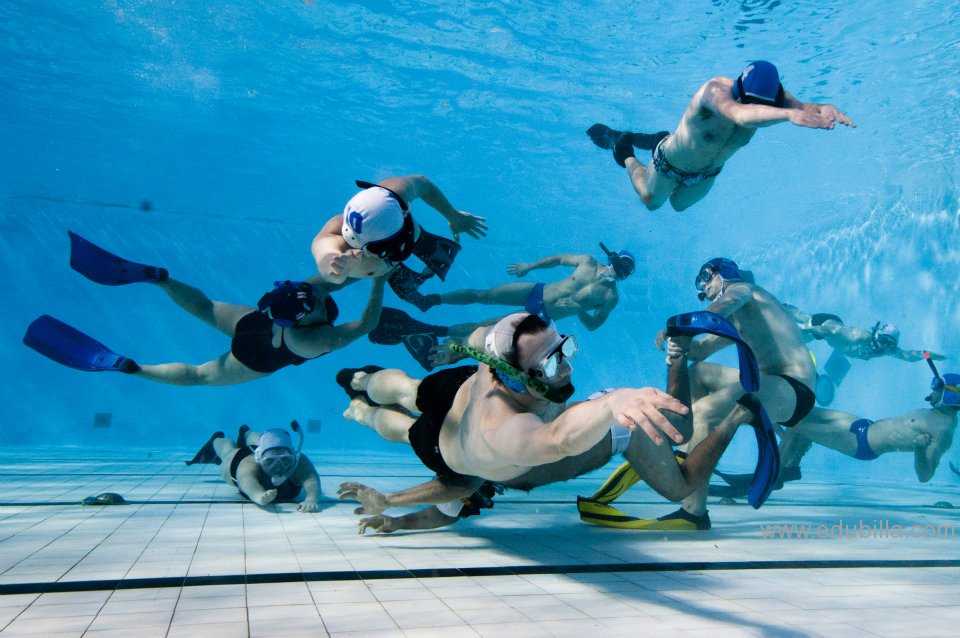
Overview Of Underwater Rugby
Underwater rugby (UWR) is an underwater teamsport. During a match two teams try to score a negatively buoyant ball (filled with saltwater) into the opponents’ goal at the bottom of a swimming pool. It originated from within the physical fitness training regime existing in German diving clubs during the early 1960s and has little in common with rugby football except for the name. It was recognised by the Confédération Mondiale des Activités Subaquatiques (CMAS) in 1978 and was first played as a world championship in 1980.
International competition:
Major championships have been conducted at continental level within Europe for senior teams since 1978 and for junior teams since 1986. World championships have been conducted since 1980. A number of regional competitions are also conducted - these include the International Underwater Rugby Tournament and the Champions Cup in Europe and the North American Underwater Rugby Tournament in North America.
European Underwater Rugby League:
In the 1st season four strongest clubs of Europe take part in the Euroleague: Swedish Malmo, Norwegian Molde, Danish Flipper and Russian Betta. The first winner of the Eurleague, based on the results of three rounds - became the Norwegian Molde.
Creating the European Underwater Rugby League was a breakthrough in the development of underwater rugby. The Euroleague has become the media product, which combines great teams with a rich history, approved and time-tested rules, effective system of refereeing, a complex system of underwater videoing. At the new level Euroleague should become the first professional tournament in underwater rugby and compete with other popular sports.
Game Rules
PLAY:
There are three referees: two in the water and one on the pool deck. Only during zone or world championships, one water referee uses scuba. Substitution is on the ‘fly’ from the parallel ‘exchange lanes.’ The game is two 15 minute halves with a four minute half time. Penalties are assessed for a variety of fouls and incur two minutes out of the water while the team plays short. Fouls include attack (removal of) an opponent’s mask, fins or snorkel. Players may not pull, hold or remove an opponent’s swim suit. Play is started by a water referee placing the ball on the bottom of the pool in the center of play; each team lines up at their end of the pool along the edge. At the sound of a whistle, all go for the ball, passing it toward the opposing goal in a leap froging manner. The goalie defends the goal but may not hold onto it or put his/her body into the basket to prevent a score - a foul.
PLAYING AREA:
The playing area is between 3.5 and 5 meters deep (10 - 15’) and 12-18 meters long (36 - 54’) by 8 to 12 meters wide (24 -36’). The goals are basket-like (16-18” or 40-45 cm in diameter) and placed on the bottom of the pool at either end. The goals resemble old fashioned, open wire school waste baskets with padded rims.
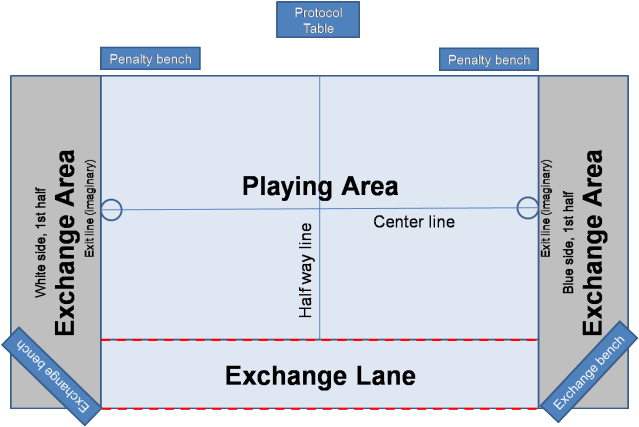
Goals:
The goals consist of two rigid baskets, each of which is located in the middle of its respective end of the playing area on the bottom of the pool as close to the wall as possible. The top of the basket, which is usually made of steel tubing on top of a metal base, is padded. The goals should not shift during play but sometimes do because they are not fixed to the pool bottom.
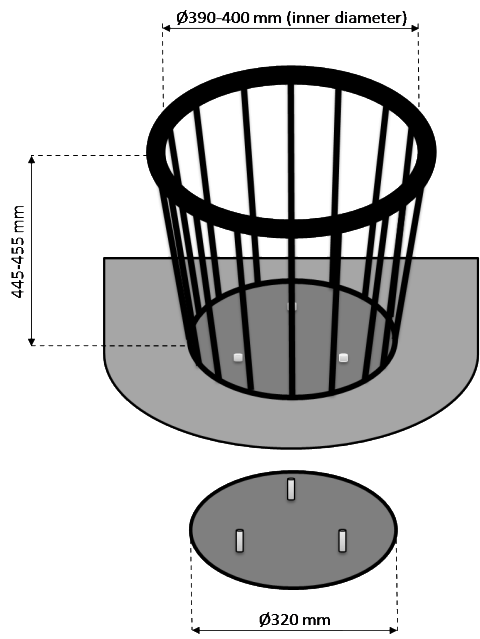
The Ball:
A ball in conformity with the rules shall have a descent rate of 1,000 – 1,250mm per second. To achieve this, the blader is filled with a solution of saltwater, which creates negative buoyancy. Balls may be colored black and white or completely red. There are two official ball sizes. For women and juniors, the ball must have a circumference between 490 and 510mm; for men 520mm to 540mm.
Equipments Need For Underwater Rugby
- Diving mask
- Snorkel
- Fins
- Water polo cap
History Of Underwater Rugby
Under water rugby was invented in Köln, Germany 1961 and became popular in the Nordic countries under the name, UW-Polo. Before the first Championship in 1978 the rules had to be merged (different number of players, 4 vs. 8, playing above the surface, etc). The game has since then evolved and now involved 13 counties at the latest championship.
First Rules:
Grimmeisen kept promoting the ideas of an underwater rugby tournament to give the sport a character of serious competition. Together with the scuba-diving section of the DUC Mülheim/Ruhr, to which six players of DUC Duisburg came, he organized the first underwater rugby tournament rules, and the "Battle for the Golden Ball" in Hallenbad Sued, in Mülheim/Ruhr. The premiere was on November 5, 1965. Six clubs sent teams to Mülheim: DUC Bochum; DUC Düsseldorf, DUC Duisburg, DUC Essen and TSC Delphin Lüdenscheid. The rules of those days allowed 8-player teams, and DLRG Mülheim, the home team, came away winners, against DUC Duisburg (for whom Dr. Grimmeisen played).
First Tournament:
The tournament has been held every year since then, which makes it the oldest tournament in the history of the sport. The Cologne version of the game was only played for a short time thereafter in Cologne, and has been long since forgotten. The Cologne team itself also turned to underwater rugby. To bring this game to the international arena, Grimmeisen turned to the two then most important members of the World Underwater Federation (CMAS), France and the USSR. He offered demonstration games and press coverage. Sadly, interest was not forthcoming. Just one French sport magazine, L'Equipe, printed a short article in its April 9, 1965 edition.
Union of German Sport Divers (VDST):
Since 1972, when the game was recognized as a sport by the Union of German Sport Divers (VDST), official German Championships have taken place. (An unofficial German Championship took place in 1971.) The first German Championship was held in Mülheim, of course, and the first German Champions were TSC Mülheim.
CMAS:
In 1978, underwater rugby was officially recognized by the World Underwater Federation CMAS, and from 28 to 30 April 1978, the first European Championships took place in Malmö, Sweden, and from 15 to 18 May 1980, the first World Championships in Mülheim.
popularity:
A version different from the current waterpolo became popular in the US, much more similar to underwater rugby, till US teams conformed to the international waterpolo rules around 1914.
The sport has little in common with rugby football except for the name.
Origin Of Underwater Rugby
Under water rugby was invented in Köln, Germany 1961 and became popular in the Nordic countries under the name, UW-Polo. Before the first Championship in 1978 the rules had to be merged (different number of players, 4 vs. 8, playing above the surface, etc). The game has since then evolved and now involved 13 counties at the latest championship.
First Underwater Ball:
The first underwater ball was invented when Bersuda filled the ball with saltwater. Since the density of the ball was now greater than that of normal water, it no longer floated to the surface, but slowly sank to the bottom. The sink rate could, within certain limits, be controlled by the concentration of the salt solution. As soccer balls are too large to be practical, waterpolo balls are used.
Dirst Official Game:
The "Cologne Discipline" was demonstrated as a competition sport at the national games in 1963, probably the first official game with an underwater ball. At the time, though, there was not much interest shown.
Underwater Club:
Dr. Franz Josef Grimmeisen, a member of the German Underwater Club in Duisburg, a city near Cologne, decided to make a competitive sport from this ball game. The German Lifeguard Association (DLRG) of Mülheim (since 1967 TSC Mülheim/Ruhr) had founded a divers' club, and through contact with members of DUC Duisburg learned of the game. With their help, Grimmeisen arranged the first underwater rugby game on Sunday October 4, 1964. It took place between DLRG Mülheim and DUC Duisburg. DUC Duisburg won the game 5-2. The next edition of the Essener Tageblatt carried the story.
Governing Bodies
World Underwater Federation:
Confédération Mondiale des Activités Subaquatiques (CMAS) is an international federation that represents underwater activities in underwater sport and underwater sciences, and oversees an international system of recreational snorkel and scuba diver training and recognition. It is also known by its English name, the World Underwater Federation, and its Spanish name, Confederacion Mundial De Actividades Subacuaticas. Its foundation in Monaco during January 1959 makes it one of the world's oldest underwater diving organisations.

Origins:
An international congress of diving federations representing all underwater disciplines met in Brussels on 28 September 1958. National Delegates attended from following countries: Belgium, Brazil, France, Federal Republic of Germany, Greece, Italy, Monaco, Portugal, Switzerland, the United States of America and the former Yugoslavia. Following a decision at that congress, a meeting was held in Monaco on 9–11 January 1959, which officially established the World Underwater Federation, with an acronym based on its French title as CMAS.
A founding member and key proponent of CMAS was the French underwater explorer and diving pioneer Jacques-Yves Cousteau who was chosen to be the inaugural President with Luigi Ferraro, Italian underwater pioneer, appointed as Vice-President.
CMAS succeeded the Comité des Sports Sous-Marins (Underwater Sports Committee) of the Confédération Internationale de la Pêche Sportive (CIPS) (International Confederation of Sport Fishing), which was founded on 22 February 1952.
Commitees:
Sport Committee:
Everything about underwater sport life.
Technical Committee:
World class standards for all aspects of Scuba Diving.
Scientific Committee:
Marine biology, geology and underwater archeology.
To Visit Click Here.
Awards Related To Underwater Rugby
Australian Underwater Federation:
Perpetual Awards:
Nominations for Perpetual Awards other than the Beau Beere Trophy will close on the opening day of the Board Meeting. Nomination for a Perpetual Award other than Beau Beere Trophy can only be made by the State Branch in which the nominee is a Member or a Federal commission.
Beau Beere Award:
Awarded to the person considered by the Federal Board to have done the most for the advancement of underwater sports in Australia
Sportsman of the Year Award:
Any competitive underwater sportsman who is registered as a financial member of the Australian Underwater Federation is eligible for nomination.
In submitting and voting on nominations the following shall be carefully considered under the appropriate sub-headings.
Personal attitude to competitive underwater sports.
Conduct in relation to fellow competitors.
Participation in Club and minor competitions.
Participation in State and major competitions.
Assistance and encouragement rendered to others in improving their ability.
Contributions towards the betterment of the nominee’s Club.
Sample Documents Of Underwater Rugby
-Sachin Tendulkar



